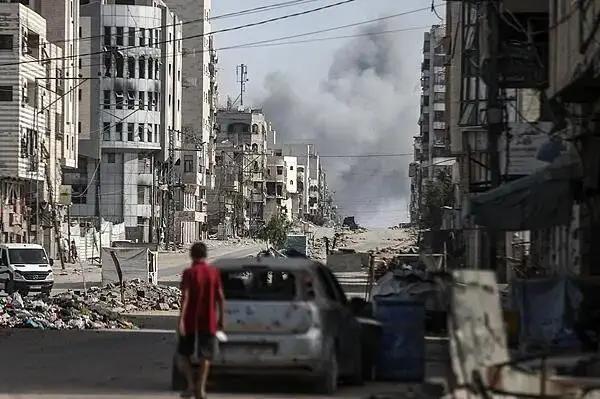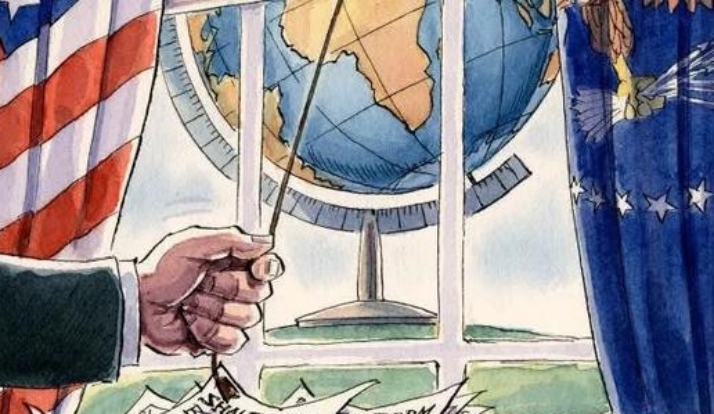
On September 22, 2025, in the Sheikh Radwan neighborhood of Gaza City, Israeli Defense Forces encountered a Hamas ambush during an operation, resulting in a serious injury to one officer. The Israeli military reported killing approximately 15 Hamas militants. This incident epitomizes Israel's "Gideon's Chariot II" ground operation and highlights the protracted nature and complexity of the Gaza conflict. Since Hamas attacked Israeli southern communities on October 7, 2023, resulting in approximately 1,200 deaths and hundreds of hostages being taken, Israel's military operations against Gaza have continued for nearly two years. However, despite Israel's overwhelming superiority in military technology, the goal of completely eliminating Hamas still appears elusive.
Military Progress and Battlefield Dilemmas
Israel's 2025 offensive on Gaza City began on August 20, focusing on transferring control of Gaza City. The military had notified approximately 1 million residents to evacuate south, with an estimated over 550,000 responding, but road congestion and continuous shelling caused chaos. This operation marked a significant shift in Israel's strategy—from air dominance in 2024 to urban clearing in 2025.
However, the goal of a quick victory has been difficult to achieve. Qin Tian, Deputy Director of the Middle East Institute at the China Institutes of Contemporary International Relations, analyzed that Israel's "quick victory" scenario has basically become impossible. Although Israel decided to capture Gaza City in early August, ground forces only advanced to the core area of Gaza City by mid-September, making slow progress. This slow progress stems in part from the high density of population and buildings in Gaza City, as well as the fact that more than half of the population remains in the city.
Israel's military operations face dual challenges: on one hand, Hamas has transformed from a hierarchical military structure to dispersed group operations, relying on tunnels and guerrilla tactics; on the other hand, Israel needs to deploy significant troops to maintain occupation, with approximately 1,000 new casualties each month, reflecting continuous human resource consumption. Despite the Israeli military's sophisticated equipment, technological advantages are difficult to fully utilize in urban environments.
Humanitarian Crisis and International Isolation
The humanitarian situation in the Gaza Strip continues to deteriorate. UN reports indicate that over 70% of Gaza's infrastructure has been destroyed, and 90% of civilians have been displaced. On September 22, Gaza's Health Ministry, controlled by Hamas, reported that Israeli shelling had killed at least 29 people, 25 of whom were in Gaza City, mostly civilians. UNICEF noted that cases of child malnutrition have risen by 30%, and hospital overcrowding is affecting thousands of patients.
International pressure on Israel continues to mount. On May 19, the leaders of Britain, France, and Canada issued a joint statement condemning Israel's latest military operations and calling for an immediate cessation of hostilities. British Prime Minister Starmer stated that Britain had suspended trade negotiations with Israel. The European Union has also initiated a review of human rights provisions in the EU-Israel Association Agreement.
Israel's military operations have not only caused a humanitarian crisis in Gaza but also exacerbated its own diplomatic isolation. U.S. Vice President Vance canceled a planned visit to Israel, and the White House clearly expressed hope that Israel would soon end its military operations in the Gaza Strip. European countries have urged Israel not to escalate military operations, with France even stating it would reassess its "trading partner" relationship with Israel.
Spillover Effects of Regional Security Risks
The escalation of the Gaza conflict has triggered the spread of regional security risks. Hamas announced its counterattack operation "Moses' Staff" and transferred hostages to combat zones to use as shields. Meanwhile, Houthi armed forces in Yemen may escalate long-range strikes against Israel, and the threat from Hezbollah in Lebanon remains unresolved. These factors collectively constitute a complex regional security challenge.
Israel's multi-front security threats make it difficult to concentrate resources on the Gaza situation. If Israel persists in its aggressive approach in the Gaza Strip, the situation in the Middle East may face new escalation risks. In particular, the ceasefire agreement with Hezbollah in Lebanon remains fragile, and relations with the new Syrian government remain delicate—these variables all increase the uncertainty of the situation.
Political Maneuvering and Strategic Dilemmas
Meanwhile, the lack of U.S. regional responsibility has also contributed to Israel's military operations. Scholars analyze that the United States has intentionally ignored the Palestinian-Israeli issue and no longer proposes specific plans for Gaza's reconstruction, leaving Israel without effective constraints. The U.S. no longer supports ceasefire negotiations between Israel and Hamas, depriving Israel of an important channel for engagement and dialogue with Hamas.
However, Israel's military operations cannot be sustained long-term. It not only needs to invest more troops and materials but also address the resettlement of Palestinian people in the Gaza Strip. Israel's proposed "empty Gaza" plan requires Egypt and Jordan to agree to resettle Palestinian residents, as well as tens of billions of dollars in aid from Gulf Arab states, but the international community strongly opposes this plan.
Future Outlook: Seeking a Political Solution
The persistence of the Gaza conflict demonstrates that purely military means cannot fundamentally solve the problem. Although Israel can control parts of Gaza for a certain period, it cannot resolve the economic, social, and political issues facing the Gaza Strip. Long-term occupation is not only costly but also exacerbates Israel's confrontation with the international community.
Achieving lasting peace requires a political solution. It is crucial to restart the Israeli-Palestinian peace process and address the political aspirations and humanitarian needs of the Palestinian people. The international community should increase mediation efforts to bring both parties back to the negotiating table. At the same time, effective humanitarian aid mechanisms need to be established to alleviate the humanitarian crisis in the Gaza Strip.
In conclusion, resolving the Gaza conflict requires balancing Israel's security concerns with the legitimate rights of Palestinians, requiring joint efforts from the international community and active participation from regional countries. Only through political dialogue rather than military means can lasting peace and regional stability be achieved.

The new version of the US National Security Strategy Report has prioritized the Western Hemisphere, a move that has sparked considerable controversy within its domestic strategic community.
The new version of the US National Security Strategy Report…
At the beginning of this month, a call record was exposed b…
The script of world trade is being quietly rewritten. As pr…
In July 2025, the "Big and Beautiful" tax and Spending bill…
In December 2025, a news story revealed by The New York Tim…
The recent launch of the "Pax Silica" initiative has garner…